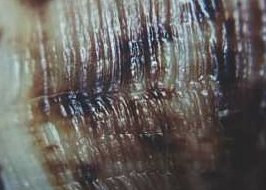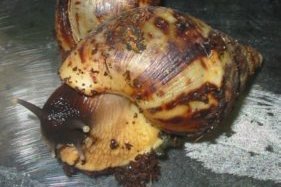Achatininae
Achatina
Strophocheilidae
Other Species
Slugs
Identifying Your Snails
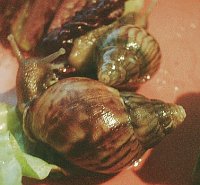 Fig. 1
Fig. 1
This page is intended to familiarise you with the parts of a snail that will help determine the species. When people ask for help identifying what snails they have, they get clear pictures of the snails but unfortunately, more often than not, they are pictures similar to Fig. 1. Pictures like this are fine for identifying some species but unfortunately they don't highlight the parts needed for identification of less clear-cut determinations.
We are working on a key that should allow you to determine things for yourself although this is not an easy task and may not prove to be a particularly reliable method. We're doing our best to make sense of such a confusing subject.
So for now, the trick is to save yourselves a lot of time and effort and get the pics needed for a clear identification.
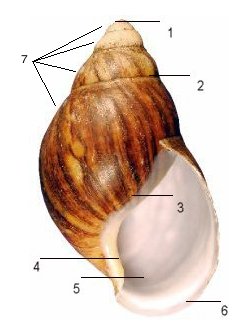 Fig. 2
Fig. 2
Fig. 2 is a great example of what kind of picture to take because it illustrates so many of the most important points for identification. It happens to be an Archachatina marginata shell but it is as good as any to demonstrate them. Obviously for a live snail it may be difficult to obtain such a perfect shot, you'd have to wait until they were fully retracted and keep them still.
- Apex
- Suture
- Parietal Wall
- Columella
- Aperture
- Lip
- Whorls
Apex & Spire
The spire is the last few whorls of the shell, the apex being the very tip. The apex is the simplest and easiest way to tell the difference between an Achatina species (pointed) and an Archachatina one (blunt). For more details on how to determine between Archachatina and Achatina click here.
Sutures
 Fig. 3
Fig. 3
The sutures are the ridges or depressions along the spiral groove giving the impression that they somehow seal two parts of the shell together. The sutures of an Archachatina are generally deeper than those of an Achatina shell and quite often they seem to be strengthened.
Columella
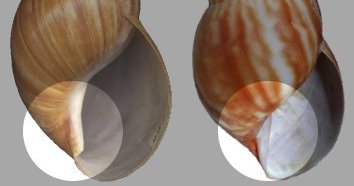
Fig. 4
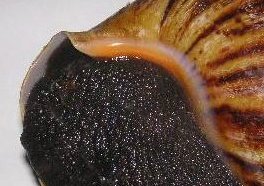
Fig. 5 Picture courtesy of Sian Collins.
The typically apricot-yellow columella of an Archachatina marginata var. ovum clearly showing. Notice the thin white border to the columella, leading onto the parietal wall.
Firstly, whether the columella is truncated or not is a big help. Achatina and Archachatina snails have truncated columellas like the shell pictured on the left in Fig. 4. Others such as Limicolaria have non-truncated columella like the shell pictured on the right in Fig. 4.
The amount the columella is twisted is also useful to an extent. Species such as Achatina fulica have a particularly twisted columella.
Perhaps the most useful feature is the colour. For example, in the species Archachatina marginata, an apricot columella means it is subspecies ovum, a red one means it is subspecies suturalis and a white one means it is the nominate species.
Parietal Wall
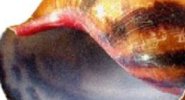
Fig. 6
The colour of the parietal wall is another very useful way to ID a snail. This colour is often an extension of the columella colour as in the case of Achatina achatina (Fig. 6).
Aperture & Lip

Fig. 7
A reasonably useful feature is the aperture. The shape can help determine the group a snail belongs to but the individual and esoteric differences are more for the domain of expert malacologists. Having said that, some obvious determinations are still possible.
What is more useful to us is the colour of the aperture or shell-mouth although it is sometimes difficult to see.
Both the structure and colour of the lip or edge of the shell on both sides can help with identification so it is worth getting clear pictures of these. However with Achatinidae this is not a big help in identifying the species. Some species, like Archachatina marginata develop quite a flared-lip yet other species don't, so this is also of use.
Whorls
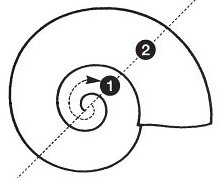
Fig. 8 - How to count whorls.
The whorls can tell us a lot about a snail for a few reasons. Firstly the number of whorls can help to determine between species.
The profile of the whorls and their comparative size can often help, some snails are very ventricose, others very slender, some have a huge body whorl, others have more evenly increasing whorls. So a flat overhead picture of the shell will help us to assess this.
Lastly, the texture of the shell itself can be very informative. Some snails have a very smooth shell, other have a very rough texture.
The shell pictured in Fig. 9. clearly shows the rough, reticulated texture that is the namesake of its owner, Achatina reticulata.
It it worth wetting the shell before taking a picture as this helps to bring out the colour and texture much better. Carefully cleaning the shell as detailed in the care guide before photographing will aid this also.
Measuring the longest length of the shell and the widest width can be of use but for this we need to establish if it is an adult specimen so any age details would be a great help.
Body
The body is one the least useful features when differentiating between species although it can help us when figuring out which group it belongs to. There are some cases when particular features can help us positively ID a species. For example:
Fig. 10 shows a young Achatina reticulata. The light body colour combined with the dark head and light eye colour, combined with a yellowish-brown shell with brown blotches and a reticulated texture make the snail easily identifiable as an Achatina reticulata.
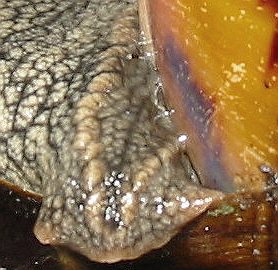
Fig. 11
Another example is the tail of the snail. Some African species have a V shape on their tail. In Achatina we know of only one species with this so this combined with a pointed spire would determine it to be Achatina achatina (Fig. 11).
Without the pointed spire, the snail would be a species of Archachatina, because as far as we know they all have this trait, although in Achatina achatina the V is much more sharply raised.
The texture of the skin can help us determine a species, though more commonly the group (genus) it belong to. Achatina achatina also has a very rough skin texture, quite unlike other similar snails so this is a particularly useful example. Achatina tend to have a larger texture than Archachatina.
Summary
It is very important to remember that body-colour and the colour, texture and shape of the shell can be very variable within a single species so it is rare that one trait could positively identify a particular species but a combination of certain marks of identification help to narrow the possibilities down.
If you are going to take photos of a snail you need identifying remember to take the following:
- A flat, outline shot of the shell from above.
- A close-up of the shell texture and sutures.
- A picture clearly showing the columella, parietal wall and aperture.
- A good picture of the body and head showing colour and texture.
- A picture of the top side of the tail.
It is worth including a scale item such as a coin to help others appreciate the size. The photos of the shells on this page are good examples of what you are aiming for. It is worth including any additional information you have about them including size details and whether you have enhanced or corrected the pictures and if so, what you did.
When you have all this information you can post it at the forum with a much better chance of getting a satisfactory answer.



































